Playing Cards from Denmark

Adolph Wulff Kort No.70
Playing cards for Denmark made by C.L. Wüst
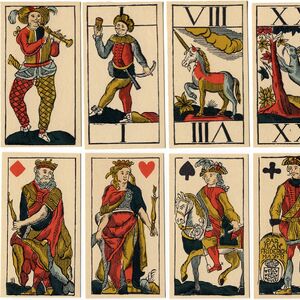
Animal Tarok by Jean Friedrich Mayer (1752-1783)
Animal Tarok by Jean Friedrich Mayer (1752-1783).
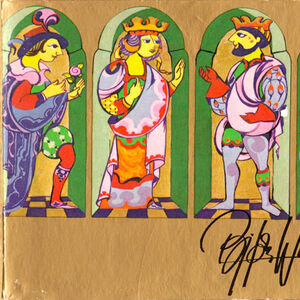
Bjørn Wiinblad
Bjørn Wiinblad (1918-2006) was a Danish painter, designer and ceramics artist.
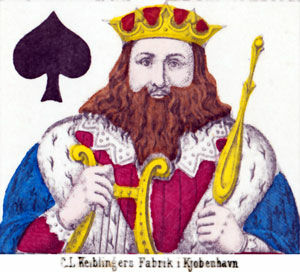
C.L.Keiblinger, Copenhagen 1852-85
C.L.Keiblinger, Copenhagen 1852-85
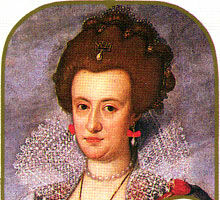
Christian IV Anniversary
King Christian IV anniversary pack, designed by Thora Fisker and printed by L. Jevison Junior, 1988.
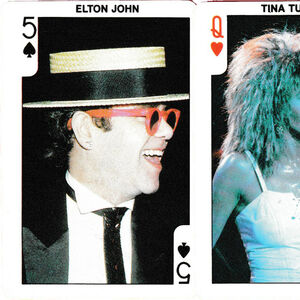
Dandy Rock’n Bubble
56 rock and pop stars of the 1980s, issued in Denmark with bubble gum.
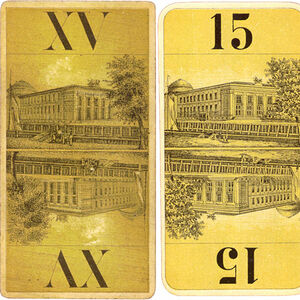
Danish playing cards - Tarock trumps
Two versions of trump no.15 depicting the Thorvaldsen Museum.
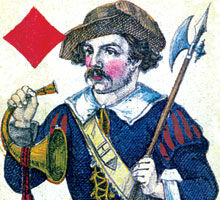
Danish Tarok Cards - Holmblad, c.1850
The traditional animal images on tarok decks are here substituted by images of buildings from Copenhagen and the surrounding area. The deck had several editions, with each new edition updating the latest changes to the buildings that had taken place since the previous edition.
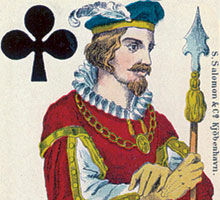
Danish Tarok Cards - Salomon & Co., c.1906
Danish Tarok cards published by S. Salomon & Co., Kjøbenhavn, c.1906.
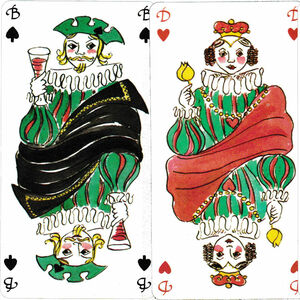
Dronning Margrethe II
Elegant, elongated cards designed by Queen Margrethe II of Denmark.
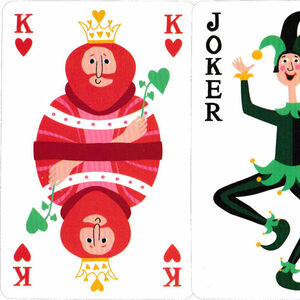
Flying Tiger playing cards
An “eco-conscious” product with fun, modern designs from Denmark.
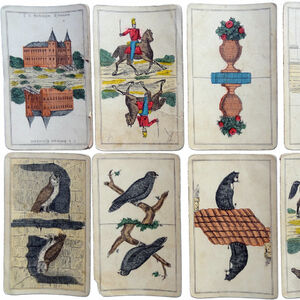
Gnav
cards from an early 'Gnav' game made by C.L.Keiblinger, Copenhagen c.1860
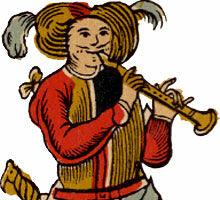
History of Danish Playing Cards
The earliest mention of playing-cards in Denmark dates from 1487 when King Hans, who reigned from 1481-1513 and was notorious for his gambling, again and again drew money from the treasury to pay for his losses.
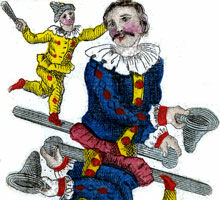
Holmblad Animal Tarot
Instead of the old emblematic designs, the trump cards show illustrations of animals, which could possibly have symbolic meanings or moralizing interpretations.

Holmblads No. 121
Holmblads No. 121 made by John Waddington, England, for Denmark
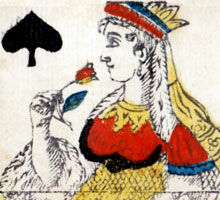
Jacob Holmblad c.1820
Standard woodblock and stencil deck produced by Jacob Holmblad with double-ended court cards in the tradition of the French ‘Paris’ pattern. The A♥ features a red over-stamp referring to Jacob Holmblad's royal license to print playing-cards which had been granted in 1820.
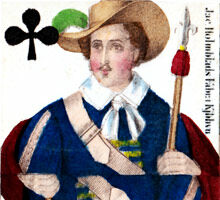
Jacob Holmblad c.1830
An amazing difference can be seen between the early and the later Jacob Holmblad packs, covering a time span of only 17 years.
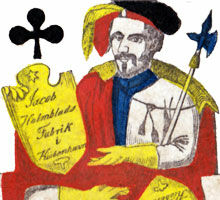
Jacob Holmblad, 1820s
The Q♥ has a butterfly net in which she has caught four hearts. Many of Holmblad's designs were replaced or changed in different editions, but this design was not used again.
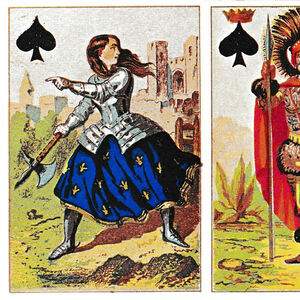
Jeanne l’Hachette
Jeanne l’Hachette reprint of 19th century transformation deck, Denmark, 1976.
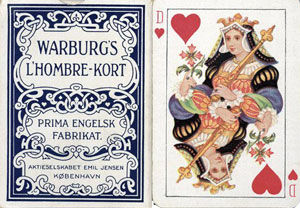
King Christian of Denmark
In 1935 a souvenir pack of playing cards to celebrate the King's 65th birthday was commissioned from the British firm of De La Rue.

